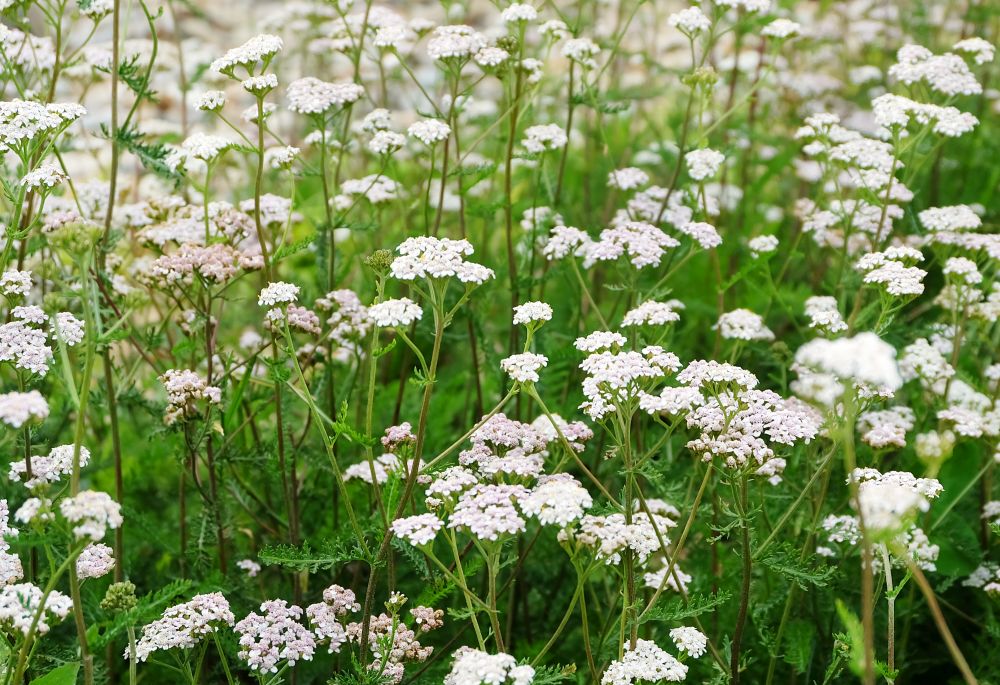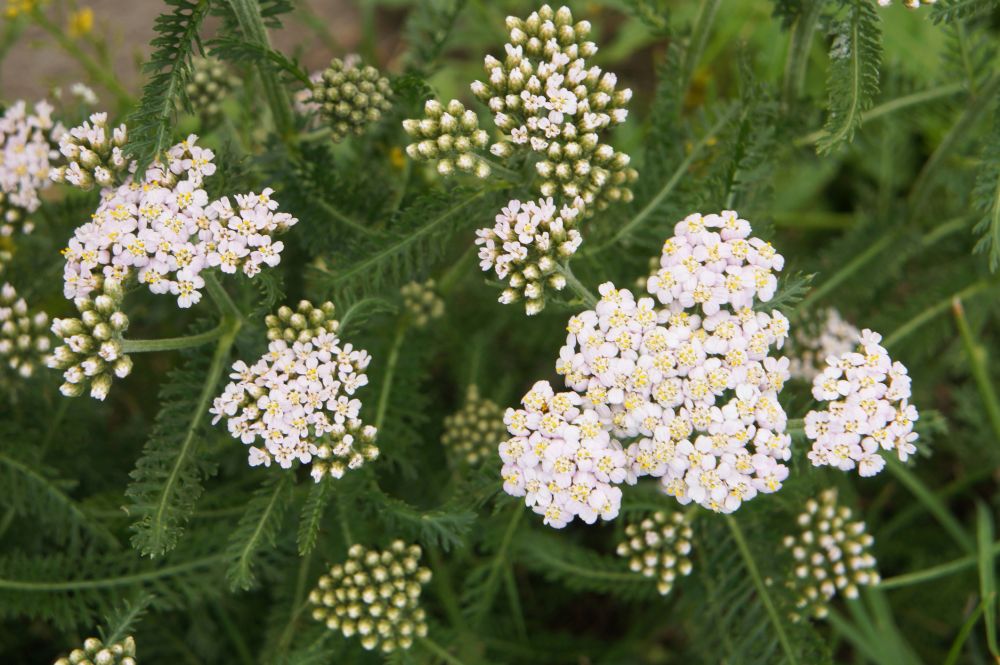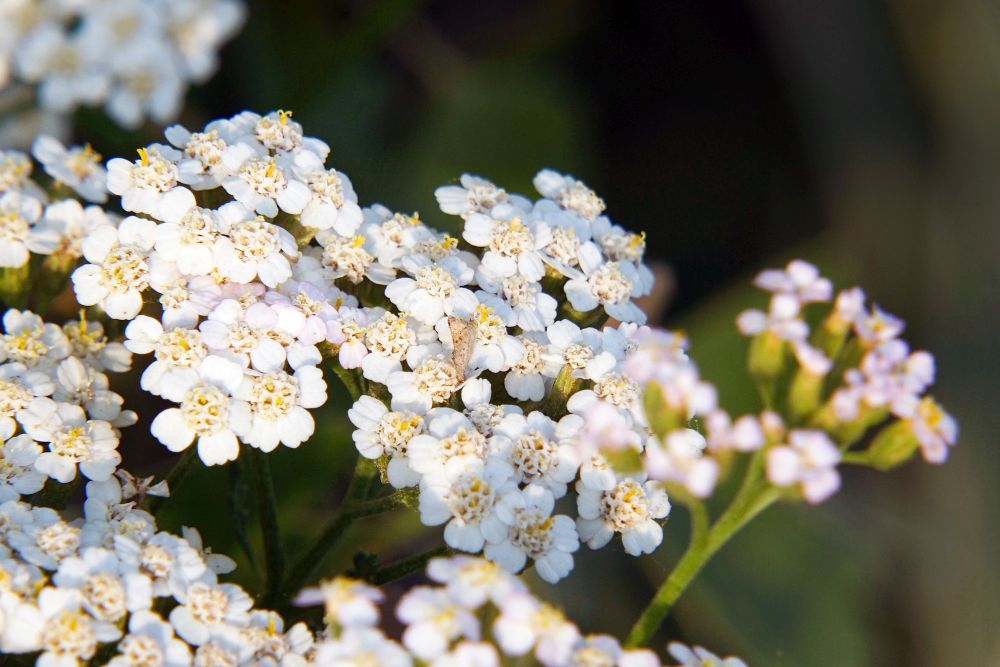Yarrow Care – How To Grow And Care For Common Yarrow
For some people, yarrow is more than a perennial to grow as a ground cover. The common yarrow has undeniable ornamental values, even if in some regions it’s considered an invasive weed. Those tightly packed clusters of flowers that come in various shades are just what you need to create stunning floral arrangements.
As for the plant itself, it does well in open meadows as much as borders, fences, and edges. Whatever landscaping purposes you have for the versatile yarrow, the plant is up for it. However, you need to keep in mind that it’s toxic for a wide variety of animals, including dogs, horses, and cats. So caution is required when growing the herbaceous yarrow in your garden. And with that out of the way, let’s get up close from a safe distance to this dazzling yarrow and learn how to grow and care for it.
Yarrow Herb at a Glance
Whether you call it gordaldo, devil’s nettle, milfoil, or old man’s pepper, yarrow (Achillea millefolium) is the one and same herbaceous perennial that grows widely in the temperate regions of North America, Europe, and Asia. It grows well in USDA hardiness zones 3 to 9.
On average, the mature plant grows one or more stems that reach anything between 8 to 40 inches tall. It all depends on the variety or cultivar you grow, as we’ll see later. However, no matter what cultivar you plant, you will always have wonderful and colorful flowers with a long bloom time.
By June, the first clusters of flowers open up. They contain many tiny flowers grouped together and vary in color from pink to white, yellow, and red. They are a magnet for many pollinators and emit a sweet and strong fragrance. The flowers stay in bloom until September giving you a wide window to cut and use them in your various indoor designs.
Benefits of Growing Yarrow
Despite the environmental hazards and health risks involved with yarrow, it still has many benefits that outweigh those risks. In fact, yarrow has been a part of both Greek and Chinese folklore, where it has gained an almost mystical reputation. But in your garden, yarrow has more practical uses and benefits.
- Mulch: One of the more interesting facts about yarrow roots is that they tend to mine the soil for calcium, phosphorus, and potassium. This makes the plant a wonderful and nutritious mulch that enriches the soil and feeds the veggies and flowering plants in your garden.
- Compost: For the same reasons that make yarrow a good mulch, you can also compost it and use it to fertilize fruit trees.
- Soil Clean-up: Yarrow roots also mine the soil for minerals such as copper. So if the soil is contaminated with excessive amounts of minerals, you can plant yarrow to absorb them and do a thorough clean-up.
- Pollinators: The flower clusters of yarrow attract bees, butterflies, and other pollinators to the garden. It also attracts other beneficial insects that feed on pests and bugs in the garden.
- Ground Cover: Because of its fast growth rates and dense foliage, you can grow it as an excellent ground cover. You’ll need to mow it at least 3 times a year to keep it under control.
- Design: Use the fresh flowers in your floral arrangements or dry them out and use them in many crafts.
- Medicine: Although there’s no scientific research to back this up, yarrow tea has been used to reduce inflammation and treat fevers.
Yarrow Varieties
Among its many benefits, the ornamental values of yarrow remain the number one reason many people grow it in their gardens. This might explain why there are so many cultivars with different flower colors and fragrances. Here are some of those cultivars to consider.
- Apple Blossom: Originally from Germany, this cultivar has won many hearts with its pinkish-purple flowers. The plant grows to about 24 inches high, and the flower heads average about 3 inches in diameter.
- Gold: A large cultivar that grows to about 3 feet tall. It has silver-green leaves and bright yellow flower heads that grow to 4 inches across. Use the cuttings to make stunning floral arrangements on their own or with other flowers.
- King Edward: A small cultivar that grows well in rock gardens. Since it only grows to 6 inches tall, you can grow it as a ground cover. Its leaves are wooly, and the flowers are yellow and small.
- Paprika: Has larger flowers than other cultivars that grow to about 4 inches in diameter each. The leaves are usually green, and the flowers are dark red. The average plant reaches about one foot tall at maturity.
How to Grow Yarrow
If experience has taught us anything, it’s that hardy plants that grow in the wild are easy to start in your garden with little to no experience required. This is true of yarrow as well. The herbaceous plant has developed a reputation for being hardy and takes care of itself no matter what the weather or soil conditions are like. Here’s how to grow yarrow from seeds in easy steps.
- Yarrow seeds germinate well in cold to moderate temperatures. So the best time to start the plant is either in the spring or fall.
- Drench a paper towel with water to get it soaked, then wrap the yarrow seeds in the towel. Place it in a plastic bag and keep it in the fridge for 4 weeks.
- While waiting for the stratification process to take effect, you can prepare the soil.
- Choose a sunny spot in your garden and break the top 4 inches of the soil.
- When the seeds are ready, take them out of the plastic bag and plant them in shallow holes about a quarter-inch deep. Cover each seed with shallow soil. The seeds need sunlight to germinate, so don’t plant them too deep.
- Space the seeds about one foot apart to give the roots room to grow.
- Water the seeds and keep the soil moist until they germinate.
- Replant any barren batches to create a perfect ground cover.
Yarrow Care
Once the seeds of yarrow start to sprout, there’s literally no stopping this vigorous perennial. It tolerates drought, heat, and even poor soil. For the most part, your job will be to keep the ever-spreading yarrow from growing beyond control.
Soil
Yarrow is not particular about what type of soil you grow it in. It does well in clay as well as sandy or loamy soil. As long as the soil is well-drained, you won’t have trouble growing this perennial. Experts recommend that you grow common yarrow in poor soil since it tends to become aggressive and even invasive in rich soil. As for the soil pH, the plant has a high tolerance for both acidic and alkaline soil. Levels between 4 to 8 are quite acceptable. In fact, and since the roots are famous for mining minerals in the soil, growing yarrow might fix the soil pH and bring it close to neutral levels.
Light
Common yarrow favors full sun over full shade. You can get away planting it in partial shade. As long as the plant gets between 4 to 6 hours of sunlight a day, it will happily continue to grow and bloom in your garden. Light deprivation will impact its growth and reduce the number of flower clusters you get year after year. Signs the plant is not getting enough light include soft stems. The usually erect stems become floppy and require support to keep the flower heads up. As for temperatures, the hardy plant has a remarkable tolerance for both hot and cold temperatures.
Water
The seeds of yarrow require constantly moist soil for them to germinate. But once the seedlings are above the ground and can support themselves, you can cut back on watering. In fact, it’s better that you allow the soil to go dry between waterings. Common yarrow is drought tolerant, and prefects dry soil to wet or waterlogged ones. If you get on average about one inch of rainfall a week, then you won’t need to water the plant at all. Otherwise, you’ll need to provide that much water on a weekly basis during the spring and summer. After the last flower has dropped in the fall, you can cut back irrigation by half.
Pruning
Pruning, along with harvesting flowers, will be your main job as far as yarrow maintenance is concerned. The plant is known for its aggressive growth as its robust roots keep mining nutrients in the soil. If you grow it as a ground cover, then you’ll need to mow it between two to three times a year. Keep in mind that rich soil promotes faster and more vigorous growth. As for plants grown for their flowers, you can prune them once a year in the later spring. This will trigger the plant to grow sturdier stems that stand upright without support.
Pests and Diseases
One of the perks of growing yarrow is the way it attracts plenty of pollinators and good insects. The upside here is that you’ll hardly find any pests crawling on the leaves and stems of your yarrow plants. Only aphids dare attack the plant. You can hose them off with a garden hose unless the other insects feed on them first.
As for diseases, you should look out for floppy stems. This is caused by a lack of sunlight. High humidity levels and poor air circulation around the plants might cause powdery mildew, rust, or stem rot. You’ll need to remove the infected parts and dispose of them safely. Also, cut back on watering during high humidity spells and improve the airflow between the plants to prevent these diseases.
Harvesting Yarrow Flowers
By early summer, yarrow shows its full splendor as the first flower clusters open up. Since each flower head carries many clusters, you’ll have to wait for all clusters to open up before you can cut that flower head. And to check for the stem’s maturity, give it a good shake. If it pops its head from one side to the other, it’s not mature enough yet. And the best part is, the more flowers you harvest, the more flowers the plant will grow to replace those you’ve just harvested.
So you can keep harvesting yarrow flowers from early June until mid-September. For best results, harvest the flowers either in the early morning or in the late evening. The flowers look their best in cool temperatures. Keep them in a vase where they’ll stay fresh for weeks on end.


